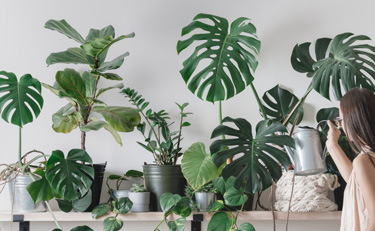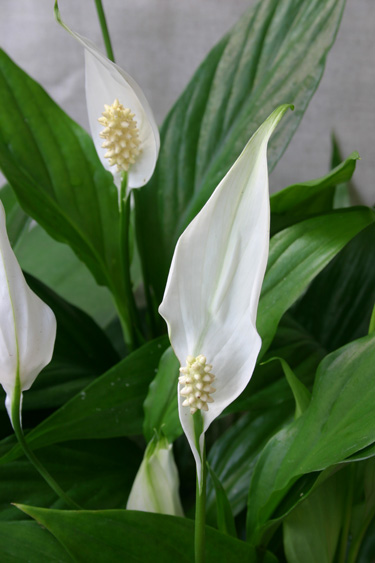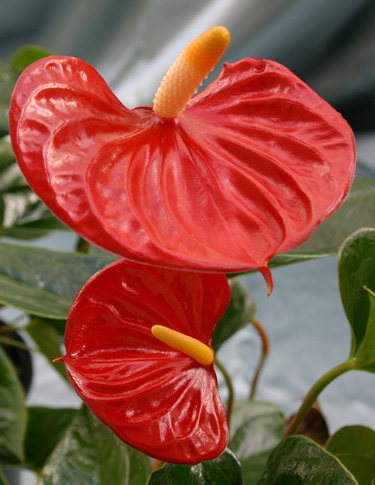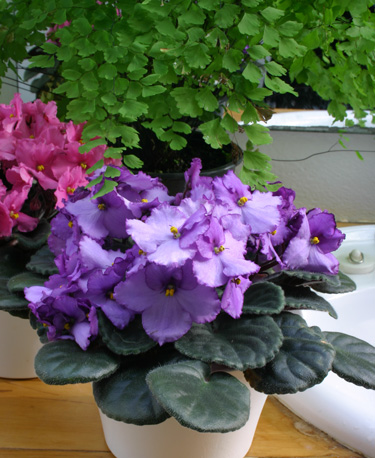Life inside - success with houseplants
Connecting with nature doesn’t just happen outside. In a fast changing world, more and more of us are discovering or rediscovering the simple joy of co-habiting with plants.
Houseplants haven’t known such celebrity since the baby boomers had flatmates and the internet was a strange futuristic notion.
Our passion for livening up our living spaces with greenery is a global trend and it’s sticking. Reasons cited include a lack of green space in crowded cities, the downturn in home ownership, concern about climate change, and the soothing effect of nature in a fast changing world.
There is no doubt that living in close proximity to plants has a positive effect on our physical and mental wellbeing. Plants and flowers instantly lift a room and make it feel fresh and welcoming. We also know that plants absorb toxins and purify our air.
The choice of beautiful indoor plants in garden centres has blossomed recently with a corresponding array of beautiful pots, clever growing systems and everything else we need to keep our plants looking as healthy as the day we brought them home.
Keeping plants happy indoors can present more of a challenge than it does outside in the garden, not least because no plant ever evolved to live in a building away from natural light, soil and moisture. It’s important to remind ourselves of this when we suffer failures, but nurturing living plants, indoors or out is one of life’s most rewarding diversions.
Finding the right spot for the right plant is a big key to success as plants can be fussy about light and temperature. And unlike their mates outside, indoor plants must put up with dust, drafts and heaters. Water is critical for any pot plant, but one of the main problems is actually watering them too much. Most love bright indirect light, but many will tolerate low light conditions.
The good news is that the plants we know as houseplants are tried and true indoor soldiers, long proven to cope with such adversity. Many hail from humid tropical regions. Others are dessert dwellers.
Nutritional needs
Once houseplants are happy in a suitable spot, keeping them healthy amounts to meeting their watering and nutritional needs, as potted plants obviously have no means of doing this for themselves and the nutrients in potting mix eventually get used up. When regularly fed, plants give us their best. They’re far more resistant to pests and diseases, their foliage is more lush and flowering performance is improved.
The best time to feed is when plants are actively growing. For most plants this means spring and autumn. Granular fertilisers designed for outdoor use are generally too strong for houseplants, but a wide selection of plant foods specifically designed for indoor plants is available in garden centres.
Houseplant foods can be fast acting liquid fertilisers for a quick pick- me-up or long-lasting ‘slow-release’ or ‘controlled-release’ fertilisers. Pelletised organic plant foods release nutrients slowly and add beneficial microorganisms to the potting mix. They can be fortified with extra nutrients for peak performance.
Prilled plant foods release their nutrients over many weeks or months. Their nutrients are compressed inside a porous barrier that releases nutrients gradually in response to temperature or moisture to keep them more in step with plant growth. They can be sprinkled over the top of the potting mix or mixed in at repotting time.
Whichever type of plant food you choose it should be a ‘complete fertiliser’ for a balanced diet of nitrogen, phosphorous and potassium (NPK) plus essential trace elements. Specific needs do vary between plants, which accounts for the range of different plant foods on offer.
Repotting
Sooner or later all potted plants need repotting. Some benefit from repotting every year. Others can wait longer, but it’s amazing what fresh potting mix can do for a stressed out plant.
Over time, potting mix looses its ability to support water and nutrients for plant roots and accumulate a build up of unwanted nutrients. Poor growth, yellowed foliage and poor flowering are signs it might be time to repot into the next sized pot (it’s a mistake to go too large).
Palms don’t like having their roots disturbed, so are best repotted into a bigger pot, but most others can be repotted into the same pot if you don’t want them to grow any bigger. To do this, remove up to a quarter of the old potting mix from around the roots. Tease out matted roots, letting the old potting mix fall away. Use a clean sharp knife to remove damaged roots. If you remove a lot of root mass, it’s also best to trim the top of the plant by about the same amount. Wash the pot out before repotting your plant into fresh planting mix.
Partially fill the pot with fresh potting mix, place your plant and fill around the sides with more potting mix, gently pressing it down with gloved fingers. The plant should be sitting with all the roots covered in potting mix but not the stems or leaves. Allow a gap of a few centimetres between the potting mix and the top of the pot. This prevents water spilling over the sides at watering time. It also allows space for a finishing layer of decorative pebbles, which helps keep moisture in and weeds out. Water well after repotting to fill air spaces and settle the potting mix around the roots.
Hint: if your plant is tightly holding to its pot, letting it dry out slightly might help you get it out without breaking the pot.
Winter Houseplant Care
- Water very sparingly. In winter, the potting mix should be dry on top and just moist (like a squeezed out sponge) beneath. Succulents and cacti should be kept practically dry.
- Shift topical plants away from cold draughts. Find a warm part of the house where there is bright light but not direct sun.
- Move plants away from heaters and fires and away from direct sun. The sun is at a lower angle in winter.
- Raise the humidity around precious plants by placing them on a dish of stones filled with water so that the pot sits just above the water. Heaters create dry air.
- Wipe the dust from leaves with a damp cloth. Add spraying oil for extra shine and to kill scale insects (but don’t use oil on palms or ferns).

28-Jun-2020


Spathiphyllum - Peace Lily

Anthurrium - Flamingo flower

Saintpaulia - African violet, and Adiantum - Maidenhair fern

